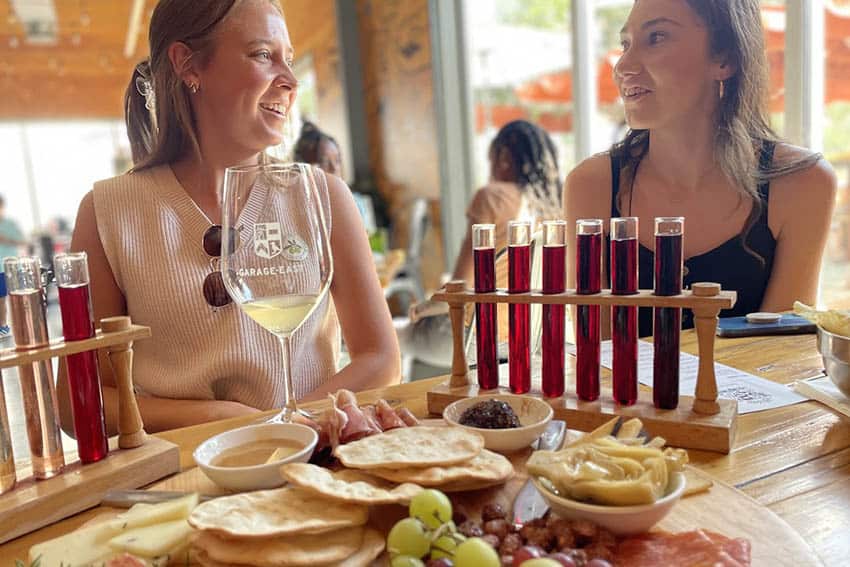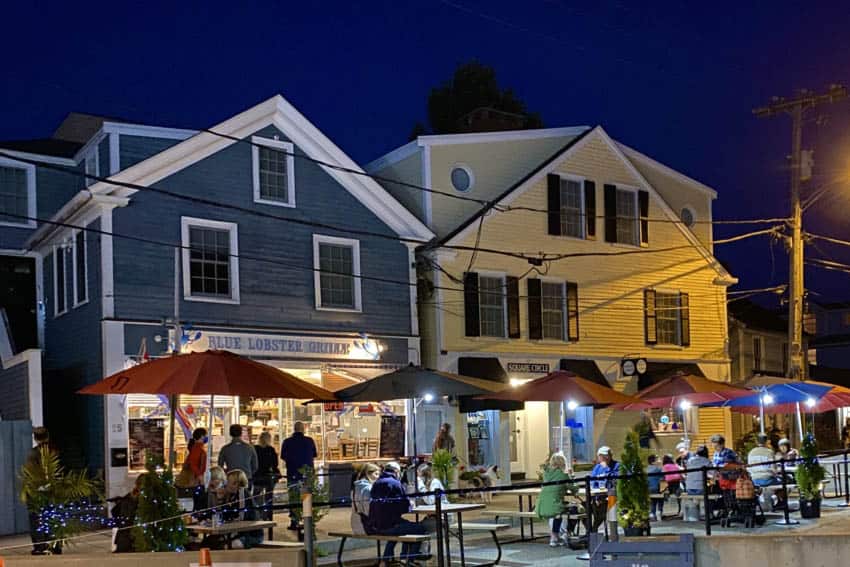
By Karl Meyer
Henry David Thoreau (1817-1862) was a Harvard-educated writer, naturalist, philosopher, and political dissident who lived in Concord, Massachusetts. He is best known for two works: “Walden Pond,” about his two years spent alone in a cabin in the woods; and his essay, “On Civil Disobedience,” recounting a night spent in jail for refusing to pay taxes supporting war and slavery. He loved Cape Cod, too.
But Thoreau is also perhaps this country’s best known pedestrian. He walked everywhere, preferring a hike to a ride in a rail car or horse-drawn carriage any day. He is famously quoted as saying, “I have traveled greatly in Concord.”
Though Thoreau died at 44, he did see a bit more of the world. He took the train to Quebec, Minnesota, Niagra Falls, and Maine, and hiked around from there. He also became enamored of Cape Cod, first visiting in 1849.
His light-hearted essays on his visits — his last occurring in 1857 — were later published as “Cape Cod.” They encapsulate the essence of the Cape’s nature — and the characters Thoreau met as he walked its 25-mile “bare and bended arm” of sand on four different occastions.
“Cape Cod” is still a fun and fascinating read. In it you can find both the seeds of what the Cape once was, and some of the reasons it is so popular today.
And though he didn’t live to see one, you can get a darned good taste of Henry’s Cape Cod over the handlebars of a bike today.
“We often love to think now of the life of men on beaches, at least in midsummer, when the weather is serene; their sunny lives on the sand, amid the beach grass and the bayberries…”
On June 22, 1857, Henry David Thoreau shouldered his bags and headed to the Provincetown wharves, ending his fourth Cape tour. Notes from his earlier visits later became the essays published as “Cape Cod.”

At 9 a.m. the Acorn slipped her mooring and, for one last time, Thoreau watched Provincetown disappear in the mists.
Today few people walk Thoreau’s twenty-five mile route along Cape beaches, where a mile equaled “two elsewhere.” But by bicycle his “bare and bended arm” Cape tour remains wonderfully accessible.
Tour 1: The Great Beach and the Gristmill
Begin at the National Seashore Visitor Center on Route 6 in Eastham. Their free map will you get oriented to the Cape Cod Rail Trail and National Seashore bike paths.
Highlights/suggestions: the views of the Atlantic are lovely from Ocean View Drive. There are two excellent movies about Thoreau’s Cape Cod and whaling available for free viewing at the National Seashore Visitor Center.
For a quick sandwich and supplies, you can stop at the Eastham Superette on Route 6, adjacent to the gristmill on the Eastham Green.
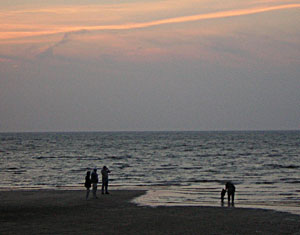
For a friendly beer and burger or scallops at the end of the day, backtrack south from the Orleans rotary onto Route 6A to the Orleans Center and try the Land Ho Bar and Restaurant (508/255-5165).
The peep of the piping plover “most perfectly revives the impression which the beach has made…”
Head down the Nauset Bike Trail through pitch pine dells to the marsh and Coast Guard Beach. When Thoreau crossed here he found a treeless expanse of sand and scrub, ending at a churning Atlantic. His cherished “beach bird,” the federally-protected piping plover, nests along this beach.
For sixteen miles, commencing at Nauset Lights, the bank held its height,..
Head north on Ocean View Drive to Nauset Light Beach above the shimmering Atlantic. According to Eastham naturalist Dennis Murley, the low patchwork of bayberry, heather, and bearberry here is part of a globally-rare habitat known as “coastal heath.”
“Being on elevated ground, and high in themselves, they serve as landmarks,…”
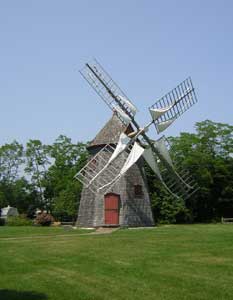
Head down Cable Road, left at Nauset Road; then make a quick right on Brackett Road to the Cape Cod Rail Trail. Go left on the CCRT to Samoset Road. Turn left on Samoset to the Eastham Windmill.
Built at Plymouth in 1680, this gristmill has stood here since 1808. Thoreau noted gristmills — as well as scores of smaller windmills used in salt-making, along his route. Return to the Rail Trail and go right. At Locust Street turn right. Follow the signs to Salt Pond Visitors Center.
Tour 2: Atlantic Bluffs and the Old Wellfleet Oysterman
Highlights/suggestions: the “old Wellfleet oysterman” John Newcomb was certainly Thoreau’s best-drawn and favorite Cape character. His house (private) still exists near Williams Pond. For a sense of the area you need a good map and a mountain bike. Then take a ride along the sandy roads of the Gull Pond, Great Pond, and Williams Pond area.
Note: Williams Pond is just north of the Wellfleet line in Truro. For a good breakfast, lunch, or dinner with a drink, the Lighthouse Restaurant (508/349-3681), has been a dependable institution on Main Street in Wellfleet Center for decades.
For used and new book browsing, try Herridge Books at 11 Main Street in Wellfleet, (508/349-1323). For night-life, music, and the only bar (and raw bar) literally on the beach along the outer Cape try The Beachcomber, (508/349-6065). It features a wide range of music and well-known acts; cover charge, often packed. Note: closed after Labor Day.
Begin at the end of the CCRT in S. Wellfleet. Turn right out of the lot–onto LeCount Hollow Road, and follow to LeCount Hollow Beach.

“Though it was very tough, I found it sweet and savory, and ate the whole with a relish.”
Below the dunes Thoreau found a sea clam. He cooked and ate it, and watched striped bass fishermen tossing frog-baited lines like lariats.
Head north on Ocean View Road along the Atlantic bluffs. At the stop sign go straight onto Gross Hill Road to Newcomb Hollow Beach. Henry wandered up this “hollow,” leading to his cottage-stay with John Newcomb, the “old Wellfleet oysterman.” Nearby, he wryly assessed a “humane house,” a life-saving shack for shipwrecked sailors.
“I was fourteen year old at the time of Concord Fight — and where were you then?”
Retrace Ocean View Road back to Cahoon Hollow Road. Turn right and follow Cahoon Hollow to the Duck Creek Cemetary at Route 6. Five rows in — facing the gas pumps across Route 6, are five headstones. At right rests Thoreau’s great Cape-character John Newcomb, who died at 94, six months before Henry’s last visit. Retrace Cahoon Hollow Road, turning right onto Old Kings Highway. Follow along until it segues into Old County Road. Follow Old County to Route 6. Turn left. LeCount Hollow Road and the Rail Trail lot are 300 yards up.
Tour 3: The Highland Light and Great Hollow
(Highlights/suggestions: there are some terrific Cape bay-beaches in the area of this tour. Most often if you arrive by bike, no one will ask you for a fee. Great Hollow and Corn Hill Beach in Truro are both pleasant places to swim and enjoy the Cape scenery.

For a restaurant treat in North Truro, try Babe’s Restaurant (508/487-9955) — serving Mediterranean and Persian dishes in a cozy, airy setting. Go a half mile north from North Truro Center toward Provincetown to 69 Shore Road (Route 6a).
For perhaps the Cape’s most dramatic overlook and lovely beach — with those monstrous dunes Thoreau raved about, take Long Nook Road to Long Nook Beach ($15 fee, or bike in for free.)
Begin at the Truro Central School, Route 6, Truro.
“I learned that a few days before this one hundred and eighty blackfish had been driven ashore in one school at Eastham…”
Cross Route 6 — with care — traveling 300 yards south (left) to Great Hollow Road. Turn right toward the sweeping views at Great Hollow Beach. Here, in July 1855, Thoreau watched Truro fishermen drive thirty “blackfish” ashore — butchering the 15-foot pilot whales on the beach. Dennis Murley, long-time marine mammal rescuer, says pilot whales still strand here regularly.
“Early in the afternoon we reached the Highland Light, whose white tower we had seen rising out of the bank in front of us for the last mile or two.”

Head back to Route 6, and turn north (left). Turn right at South Highland Road, a quarter mile up.
Follow South Highland, turning right at the Park Service sign for “Highland Light Area.” This is the third Highland Light — Thoreau lodged in the second one, and saw this lighthouse being built in June 1857. His “uninterrupted view of the Ocean and the Bay” remains.
“At Pond Village we found a pond three-eighths of a mile long densely filled with cat-tail flags…”
Head back to S. Highland and turn right. Turn left at Highland Road and travel under Route 6 to the stop sign at North Truro. Go straight — a quarter mile on Pond Road, to Pilgrim Pond on your left. Miles Standish and sixteen Pilgrims stopped here too — for their second night on New World soil. Retrace Pond Road to the stop sign, and turn right (south) onto 6A. Follow 6A onto Route 6 south (narrow shoulder for some 400 ft.) The Truro Central School is a half mile on the left.
Tour 4: The Provincelands and Provincetown
Highlights/suggestions: Plenty of water and light colored clothes/sunscreen suggested for riding the Provincelands bike trails. It can be windy, or hot, or both. The pavement can be bumpy. Watch for sand on trails.
A walk to the lookout at the Provincelands Visitor Center will let you pick out whale watching boats. If you bring binoculars it often isn’t difficult to see spouting whales near the boats.
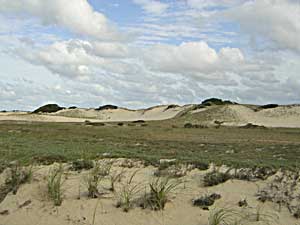
Marine Specialties, 235 Commercial Street in Provincetown is like a rummage sale, but with new and interesting stuff — from kitsch to functional. You may not buy anything, but it’s a worth a bustling gander.
Also, by tradition, you should stop at the Portuguese Bakery at 299 Commercial Street for breads, pastries, or a quick breakfast and coffee (508/487-1803).
For free — People watching is always a worthwhile in P’Town. Bet your friends a buck and see who is the first to spot someone they know — everyone that comes to the Outer Cape eventually finds their way to Provincetown.
Walk out to the ends of the piers and watch the catch of the day come in, or the locals hooking into bluefish from the wharves as they cut across the Bay.
For a moderately priced dinner in an interesting setting, try Napi’s Restaurant at 177 Freeman Street (508) 487-1145. All types of food; families and singles all feel comfortable here. There is a bar.
For a terrific getaway for gay or straight couples try the 1776 Fairbanks Inn at 90 Bradford Street, in the shadow of the Pilgrim Monument.
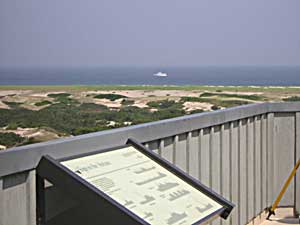
Hosts Alicia and Kathleen are most gracious. The breakfast is a delight, and you can get good Red Sox talk if you are so inclined. Rooms and suites are all tastefully appointed, most with period furnishings and fireplaces. The Inn was originally built as a home for Captain Eben Snow. Reservations: 800/324-7265; 508/487-0386.
Begin at the Provincelands Visitor Center.
“It was like the richest rug imaginable, …”
From the Visitor Center lookout enjoy the spectacular desert, scrub, and ocean hooking around Race Point Light to the Bay. Thoreau walked these sands to the Cape’s edge. Pick up a free bike map and head south on the Provincelands Trail along woods and steep dunes to Herring Cove Beach.
“The town is compactly built in the narrow space, from ten to fifty rods deep, between the harbor and the sand-hills.”

At trail’s end continue south (right) onto the road, passing Herring Cove Beach. Turn right at Moors Road, Route 6A south. Follow 6A; it hooks left into Provincetown as Bradford Street. Follow Bradford past the Pilgrim Monument. Turn right at Standish Street. Get a map at the visitor booth, and stroll Commercial Street as Henry did.
“Sleep was out of the question.”
Thoreau lodged at the old Pilgrim House hotel — home to the “cat and the bedbug.” It’s gone, but for a sense of P’town “in the day,” follow Commercial Street to tiny Masonic Street and the 1798 Atlantic House. Once the Cape’s final, sandy, stagecoach stop, it’s now a gay nite-spot. Henry may well have taken a meal in this tavern, where Eugene O’Neill once wrote plays.
“My experience is that you fare best at private houses.”
Thoreau likely passed today’s Fairbanks Inn at 90 Bradford Street, now in the shadow of the Pilgrim Monument. This lovely residence was built in 1776 by Captain Eben Snow; its wallboards salvaged from his ship.
Today it’s a welcoming bed and breakfast, catering to couples with its bright, fire-placed rooms, period furnishings, and delicious morning fare. The Fairbanks has received accolades from Out and About, Frommers, and Yankee Magazine, to name a few.
Return to Bradford Street and turn south (right). Go left on Conwell Street, and cross Route 6 at the lights. Continue straight, to the Provincelands Visitor Center.
Note: Individual tours are circuits from 8 – 12 miles long; designed for a leisurely pace. The best biking is in the morning. Though minimized, there are a few crossings and brief stints on Route 6 proper. Leave at least two and a half hours each.
Though he missed the advent of the bicycle by a few decades, it’s likely Thoreau would have enjoyed this elegantly simple invention. On a bicycle the world can be encountered using all of the senses — and it’s clear from the writings that Cape Cod was truly a light-hearted and sensual feast for the Concord author.
It still is.

Karl Meyer is a writer, journalist, author, columnist, and editor who has been widely published in regional and national publications. He is the author of Wild Animals of North America, which won the 2008 Teacher’s Choicer Award for Children’s Books. He hosts a website called karlmeyerwriting.com. This story first appeared in the July 2007 edition of Cape Cod Life Magazine.
- These 9 U.S. National Parks Require Reservations in 2024 - April 17, 2024
- Take a Hike in Olympic National Park - April 17, 2024
- The Wild Mississippi: 2340 Miles Across Ten States - April 8, 2024




